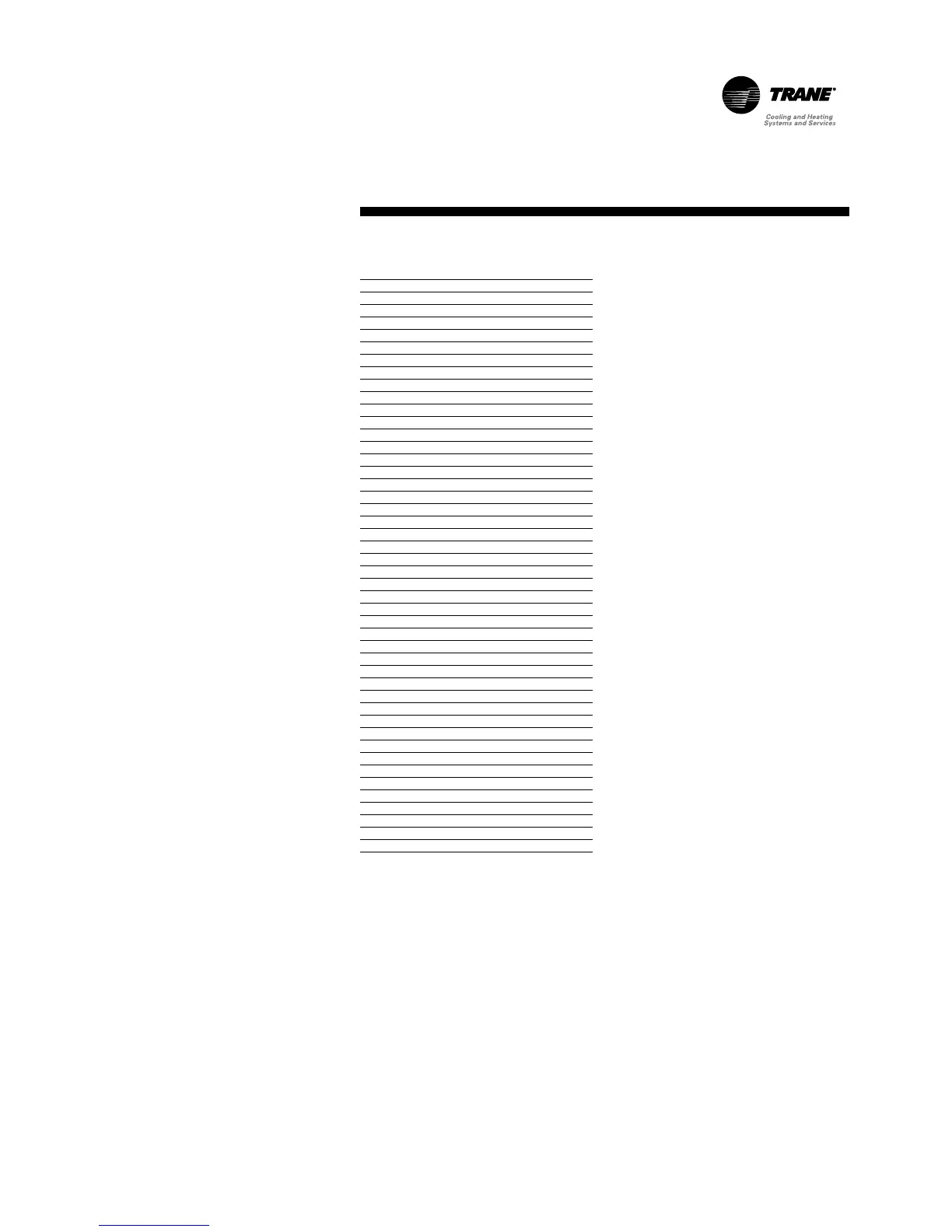RTAD-SVX01F-E4 79
Maintenance Procedures
Table 40 - Refrigerant Charge
per Circuit (kg).
Unit Size Circuit A Circuit B
Standard
Free Cooling
RTAD 085 24 24
RTAD 100 30 32
RTAD 115 35 36
RTAD 125 36 37
RTAD 145 44 48
RTAD 150 44 48
RTAD 165 61 59
RTAD 180 61 61
RTAD 085 HE 32 34
RTAD 100 HE 35 36
RTAD 115 HE 42 45
RTAD 125 HE 42 45
RTAD 145 HE 59 61
RTAD 150 HE 59 61
Partial Heat Recovery
RTAD 085 26 26
RTAD 100 33 35
RTAD 115 38 39
RTAD 125 39 40
RTAD 145 47 51
RTAD 150 47 51
RTAD 165 65 63
RTAD 180 65 65
RTAD 085 HE 35 37
RTAD 100 HE 38 39
RTAD 115 HE 45 48
RTAD 125 HE 45 48
RTAD 145 HE 63 65
RTAD 150 HE 63 65
Total Heat Recovery
RTAD 100 55 52
RTAD 115 67 64
RTAD 125 68 64
RTAD 145 86 84
RTAD 150 86 84
RTAD 165 100 95
RTAD 180 100 98
RTAD 085 HE 63 60
RTAD 100 HE 65 62
RTAD 115 HE 86 84
RTAD 125 HE 86 84
RTAD 145 HE 97 95
RTAD 150 HE 97 95
Note: Size 085 does not exist for Total Heat Recovery
option but HE version is available
Refrigerant Filter Changing
Procedure
A dirty filter is indicated by a
temperature gradient across the
filter, corresponding to a pressure
drop. If the temperature downstream
of the filter is 4.4°C (8°F) lower than
the upstream temperature, the filter
should be replaced. A temperature
drop can also indicate that the unit is
undercharged. Ensure proper
subcooling before taking
temperature readings.
1 With the unit off, verify that the
EXV is closed. Close liquid line
isolation valve. On units with
remote evaporators or oil cooling
circuits, close ball valve on oil
cooler liquid line.
2 Attach vacuum hose to service
port on liquid line filter flange.
3 Evacuate refrigerant from liquid
line and store.
4 Remove vacuum hose.
5 Depress schrader valve to
equalize pressure in liquid line
with atmospheric pressure.
6 Remove bolts that retain filter
flange.
7 Remove old filter element.
8 Inspect replacement filter element
and lubricate o-ring with Trane
OIL00048.
Note: do not use mineral oil. It will
contaminate the system.
9 Install new filter element in filter
housing.
10 Inspect flange gasket and replace
if damaged.
11 Install flange and torque bolts to
19-22 mN (14-16 lb-ft).
12 Attach vacuum hose and
evacuate liquid line.
13 Remove vacuum hose from liquid
line and attach charging hose.
14 Replace stored charge in liquid
line.
15 Remove charging hose.
16 Open liquid line isolation valve.
On units with remote evaporators
or oil cooler circuits, open oil
cooler liquid line ball valve.
Adding Refrigerant
If the entire charge has been
removed, perform the following
procedures to recharge the unit.
1 Open all service valves
2 Establish water flow through the
evaporator. Connect a hose from
the refrigerant bottle to the
backseat port on the liquid line
shutoff valve. Midseat the valve.
CAUTION! The evaporator water
flow needs to be established and
maintained while adjusting the
charge to avoid freezing and
rupturing the tubes.
3 It may not be possible to put the
entire amount of refrigerant charge
required using step 2. If so, start
the unit and add liquid refrigerant
through the liquid line service
valve.
4 Once the unit has been charged
with refrigerant, start the unit.
Measure the subcooling and verify
that the refrigerant charge is
correct.
